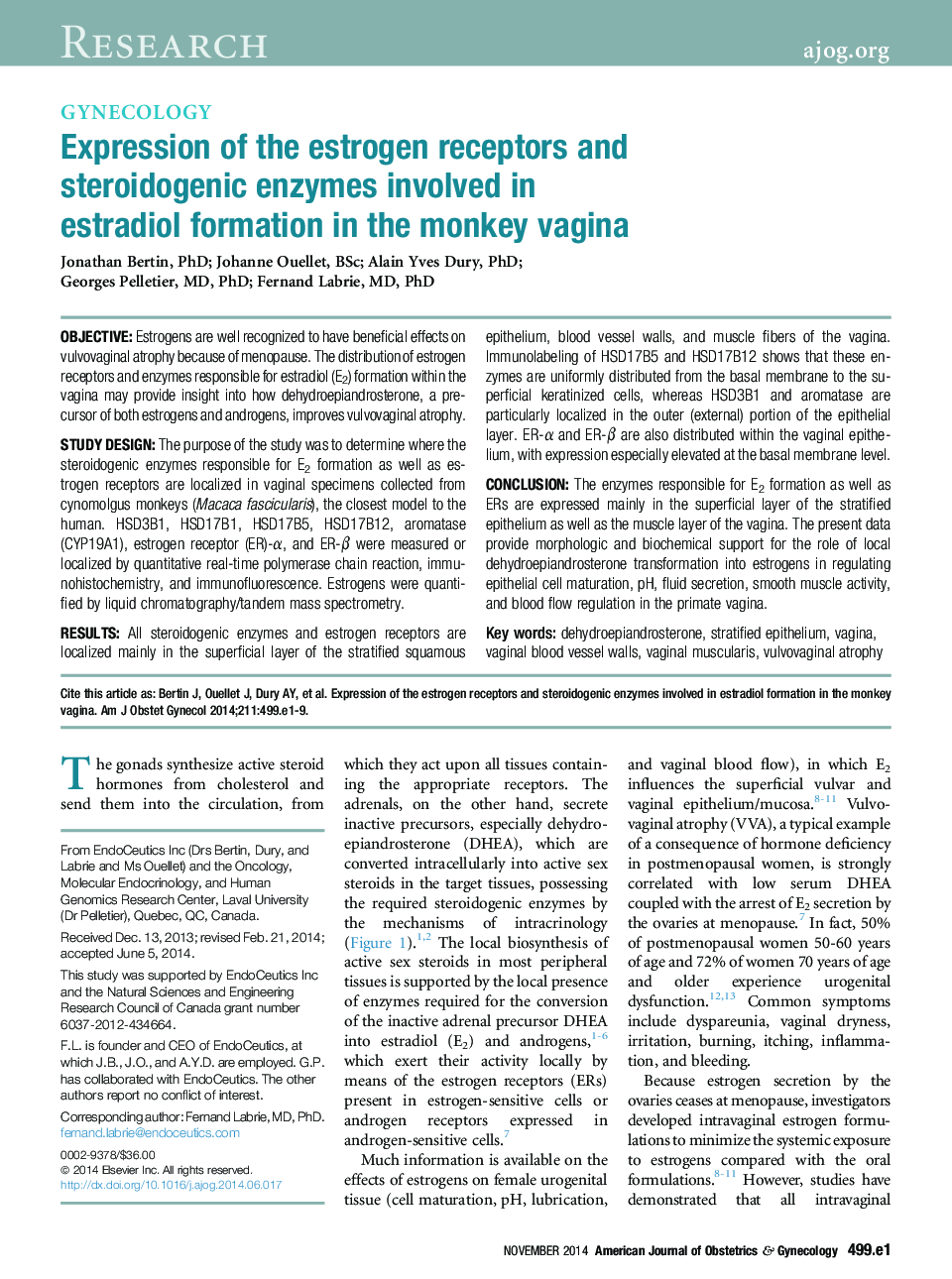| Article ID | Journal | Published Year | Pages | File Type |
|---|---|---|---|---|
| 6145498 | American Journal of Obstetrics and Gynecology | 2014 | 9 Pages |
ObjectiveEstrogens are well recognized to have beneficial effects on vulvovaginal atrophy because of menopause. The distribution of estrogen receptors and enzymes responsible for estradiol (E2) formation within the vagina may provide insight into how dehydroepiandrosterone, a precursor of both estrogens and androgens, improves vulvovaginal atrophy.Study DesignThe purpose of the study was to determine where the steroidogenic enzymes responsible for E2 formation as well as estrogen receptors are localized in vaginal specimens collected from cynomolgus monkeys (Macaca fascicularis), the closest model to the human. HSD3B1, HSD17B1, HSD17B5, HSD17B12, aromatase (CYP19A1), estrogen receptor (ER)-α, and ER-β were measured or localized by quantitative real-time polymerase chain reaction, immunohistochemistry, and immunofluorescence. Estrogens were quantified by liquid chromatography/tandem mass spectrometry.ResultsAll steroidogenic enzymes and estrogen receptors are localized mainly in the superficial layer of the stratified squamous epithelium, blood vessel walls, and muscle fibers of the vagina. Immunolabeling of HSD17B5 and HSD17B12 shows that these enzymes are uniformly distributed from the basal membrane to the superficial keratinized cells, whereas HSD3B1 and aromatase are particularly localized in the outer (external) portion of the epithelial layer. ER-α and ER-β are also distributed within the vaginal epithelium, with expression especially elevated at the basal membrane level.ConclusionThe enzymes responsible for E2 formation as well as ERs are expressed mainly in the superficial layer of the stratified epithelium as well as the muscle layer of the vagina. The present data provide morphologic and biochemical support for the role of local dehydroepiandrosterone transformation into estrogens in regulating epithelial cell maturation, pH, fluid secretion, smooth muscle activity, and blood flow regulation in the primate vagina.
